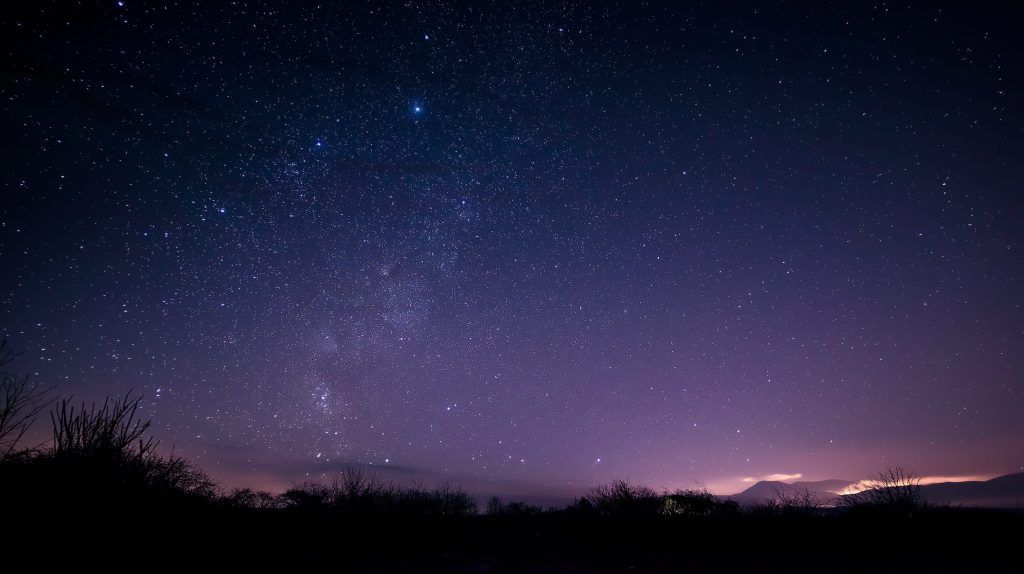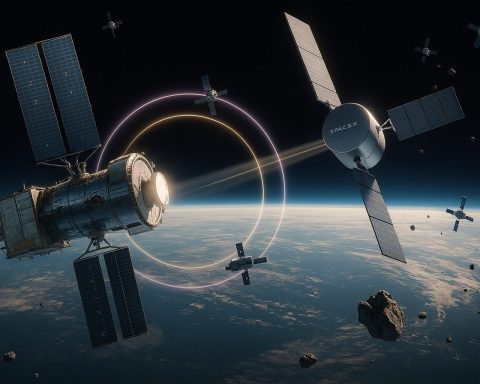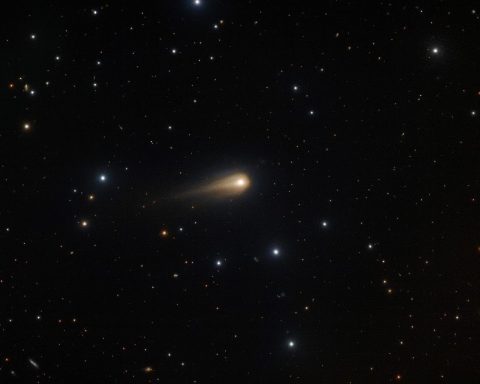United States: Moon Missions, Mega-Constellations & Scientific Milestones
- Artemis Moon Rocket Assembly: NASA marked a key step toward returning humans to the Moon. Teams at Kennedy Space Center have begun integrating the Space Launch System (SLS) core stage for Artemis III – the mission planned to land astronauts near the lunar south pole in 2027 [1] [2]. The engine section of the Artemis III SLS was moved into the Vehicle Assembly Building and mated with its boat-tail, even as the Artemis II mission hardware undergoes final testing for a 2026 launch [3]. This early start on Artemis III’s build underscores NASA’s push to maintain momentum in the Artemis program.
- Record-Breaking Earth Science Satellite “Blooms”: A joint NASA–ISRO satellite achieved a dramatic feat in orbit. NISAR, launched July 30, deployed its colossal 12-meter radar antenna reflector (“the largest ever used on a NASA mission”) successfully on August 15 [4] [5]. The gold-colored mesh antenna unfolded like a blooming umbrella after a days-long process involving explosive bolts and motorized cables [6]. “This is a first-of-its-kind, jewel radar satellite that will change the way we study our home planet and better predict a natural disaster before it strikes,” said Dr. Nicky Fox, NASA’s Science Mission Chief [7]. The $1.3 billion NISAR will map Earth’s surface in unprecedented detail, detecting movements as small as a centimeter to aid in disaster preparedness and climate research [8] [9]. Full science operations are expected by October [10], delivering data that “will have a major impact on how global communities…prepare for and recover from natural disasters,” noted Karen St. Germain, NASA’s Earth Science Division Director [11].
- SpaceX’s 100th Launch of 2025:SpaceX hit a rapid-launch milestone, flying its 100th Falcon 9 rocket of the year on August 18. The mission from California carried 24 Starlink internet satellites, bringing the year’s total Starlink satellites launched to over 1,700 [12] [13]. It was the 72nd Starlink launch of 2025 and demonstrated the reuse of a Falcon 9 booster on its 9th flight [14]. “Falcon launch #100 of 2025. For reference… we hit 100 on Oct. 20 in 2024,” SpaceX VP Kiko Dontchev noted, highlighting the increased cadence [15]. The achievement underscores SpaceX’s aggressive push for global broadband coverage, as well as plans to further boost launch capacity – the company has proposed expanding West Coast operations to up to 95 launches per year to support Starlink and other missions [16] [17].
- Cargo and Commercial Updates: NASA announced the next International Space Station resupply mission, Northrop Grumman’s Cygnus CRS-23, now slated for mid-September [18]. Notably, this Cygnus will ride to orbit on a SpaceX Falcon 9 (as Northrop transitions away from its Antares rocket) [19]. Meanwhile, small-launch leader Rocket Lab expanded its defense portfolio – it completed the $275 million acquisition of sensor-maker Geost to bolster Rocket Lab’s national security satellite capabilities [20]. And Blue Origin revealed a proposal for a Mars Telecommunications Orbiter to serve NASA’s future Red Planet missions, pitching a high-bandwidth relay satellite (based on Blue Origin’s Blue Ring platform) that could be ready by 2028 [21] [22]. These developments highlight the bustling commercial space sector, from supporting ISS research to planning infrastructure for Moon and Mars exploration.
Europe: Weather Satellite Success & Space Safety Initiatives
- ESA’s Arctic Weather Satellite Proves Its Worth: A small European weather satellite is punching above its weight. The Arctic Weather Satellite, a prototype launched one year ago, is now supplying data operationally to the European Centre for Medium-Range Weather Forecasts. Despite its compact size (125 kg) and fast development, the microwave radiometer mission is delivering significant improvements in forecasts [23] [24]. Uniquely, it operates in the sub-millimeter band to profile atmospheric humidity and even reveal ice clouds. “We are extremely proud of this mission… its performance in orbit has far exceeded our expectations,” said Ville Kangas, ESA’s project manager for Arctic Weather, noting it as a proof-of-concept for a future constellation [25]. The success has inspired plans for “EPS-Sterna,” a proposed six-satellite constellation that could provide near-continuous Arctic observations and double the coverage of current polar-orbiting weather satellites [26] [27]. As Kangas put it, “we couldn’t be more delighted” at how this New Space approach is paying off [28].
- Collision Avoidance Automation: With orbital traffic ever increasing, Europe is advancing new space safety technology. The Collision Risk Estimation and Automated Mitigation (CREAM) project, led by ESA, reached a milestone toward deployment [29]. This system will automate the process of detecting potential collisions between satellites and debris and recommending avoidance maneuvers. Given over 11,000 active satellites in orbit (and more than 1.2 million debris fragments), there’s an urgent need for faster, smarter traffic management [30]. CREAM’s software can rapidly analyze conjunction data and even initiate maneuvers, helping satellite operators respond in hours rather than days. This effort aligns with broader European initiatives to ensure the sustainability of space operations as mega-constellations grow. ESA officials emphasize that automated collision avoidance will be a “critical support in maintaining space safety,” complementing new tracking services and guidelines [31].
- Galileo and Launch Updates: In navigation news, Europe’s Galileo constellation remains on track with two new satellites having entered service earlier in the summer (bolstering global GPS alternatives). And while no major European launches occurred on Aug 18–19, preparation continues for Ariane 6’s long-awaited debut. ESA reported that a static firing test of the Ariane 6 core stage is imminent, aiming to qualify the new heavy launcher for its first flight in 2024. European industry also saw a strategic move as Arianespace signed deals securing additional Vega rocket missions to cover the gap caused by Ariane 6 delays. These incremental developments underscore Europe’s focus on independent access to space alongside its scientific missions.
Asia: Ambitious Launches, New Satellites & Spaceflight Firsts
- China’s Dual Launch Day: China carried out two orbital launches on Aug 17 (Sunday) as it rapidly expands both military and commercial space projects. From Taiyuan launch center, a modified Long March-6 rocket lofted the ninth batch of low-Earth-orbit broadband satellites for China’s planned internet mega-constellation [32]. Lift-off at 10:15 p.m. Beijing time delivered all satellites to their orbits, and Chinese media confirmed they will form part of a new nationwide “internet constellation” [33]. Hours earlier at Xichang center, a Long March-4C rocket launched an experimental payload, Shiyan-28B 02, into orbit [34]. This satellite will be used for space environment exploration and technology tests [35]. Notably, its predecessor (Shiyan-28B 01) drew attention in July for entering an unusual low-inclination orbit, hinting at specialized capabilities [36] [37]. The Aug 17 missions marked the 589th and 590th Long March rocket launches respectively [38] [39], underscoring China’s high launch tempo. These successes come on the heels of an Aug 13 launch of a Long March-5B, which delivered a batch of 16 Guowang communications satellites – part of China’s answer to Starlink – into orbit [40].
- India’s Vision: From ISS to the Moon: India’s space program made headlines with bold announcements and introspection about its future. ISRO Chairman S. Somanath (speaking on Aug 16 and echoed in news through Aug 18) revealed that “our astronaut Shubhanshu Shukla became the first Indian to reach the International Space Station and land back on Earth safely.” This milestone – indicating an Indian flew to the ISS (likely via an international partnership) – comes as India accelerates human spaceflight plans [41]. Somanath outlined a roadmap for the next 15 years: India aims to build its own space station by 2035 and achieve a crewed Moon landing (with safe return) by 2040, ambitions that would firmly place the nation among the top tier of spacefaring powers [42]. He noted the Gaganyaan crewed orbital mission is at an advanced stage, expected to soon launch Indian astronauts on an Indian rocket [43]. India also quietly notched a technological feat: it became only the fourth country to achieve in-orbit docking, with ISRO’s SpaDEx experiment demonstrating autonomous docking between two satellites earlier this year [44].
- Navigating a New Space Ecosystem: Alongside these achievements, India is grappling with the evolving role of its national space agency. A “highly debated decision” by the Indian government’s space regulator (IN-SPACe) recently authorized a private consortium led by Pixxel to build and operate the country’s first fully commercial Earth-observation satellite constellation [45]. Traditionally, ISRO handled all such satellites; this move reflects India’s push to involve startups in its space program. Similarly, rocket production is shifting to industry: for example, Hindustan Aeronautics and L&T have contracts to produce ISRO’s Small Satellite Launch Vehicle and batches of PSLV rockets [46]. These changes have prompted some experts and former ISRO officials to call for a reorientation of ISRO. With ~16,000 personnel on its rolls, ISRO may “shift its focus from production to only research,” spinning off operational units into separate companies while leaving R&D and missions to the core agency [47]. The idea is to let private industry handle routine manufacturing and services (as ISRO’s commercial arm NSIL already markets launches and satellites) so that ISRO proper can innovate – akin to how India’s atomic energy sector separated research from power production decades ago [48]. This internal debate on an “ISRO 2.0” comes as India’s government pushes for greater commercialization of space, fresh off the success of the Chandrayaan-3 Moon landing and ahead of the Gaganyaan human spaceflight debut.
- Other Regional Updates: Elsewhere in Asia, Japan’s space agency JAXA prepared for the homecoming of its Hayabusa2 sample-return capsule, set to deliver asteroid samples later this week – a scientific windfall years in the making. The United Arab Emirates announced an agreement with NASA to fly an Emirati astronaut on a long-duration ISS mission in 2026, further cementing the UAE’s status as a new space player. And in Israel, the first images and signals came in from the Dror-1 communications satellite, which reached its geostationary orbit on August 11 [49]. Dror-1, built by Israel Aerospace Industries as the country’s most advanced commsat, is now undergoing testing 36,000 km above Earth before entering service [50]. These developments underscore the truly global nature of today’s space endeavors – from national prestige projects to commercial ventures across all continents.
Space Security & Policy: The Final Frontier Turns Battleground
- Satellites Under Siege: Recent events underscored that outer space is increasingly a theater for geopolitical conflict and espionage. In a sobering Associated Press report out of Washington [51], U.S. officials revealed that during Russia’s Victory Day parade in May, pro-Kremlin hackers hijacked an orbiting satellite to broadcast the parade on Ukrainian TV channels [52]. Instead of regular programming, Ukrainians saw Russian tanks and troops – a psychological operation aimed at intimidation. This incident illustrates how 21st-century warfare extends beyond land, sea, and air into cyberspace and space itself [53]. Disabling or spoofing a satellite can deal a devastating blow “without one bullet,” experts warned, by interrupting vital communications or navigation services [54]. “If you can impede a satellite’s ability to communicate, you can cause a significant disruption,” explained Tom Pace, CEO of cybersecurity firm NetRise [55]. Modern militaries rely on networks of satellites for reconnaissance, GPS, secure communications, and early warning of missile launches – so these systems present high-value targets for hackers or direct attack.
- Arms Race in Orbit: U.S. intelligence has raised alarms that Russia is developing a highly destabilizing weapon – a space-based nuclear anti-satellite (ASAT) device designed to destroy satellites en masse [56]. According to declassified details, the concept involves detonating a nuclear device in orbit to wipe out virtually every satellite in low-Earth orbit, crippling an adversary’s infrastructure in one blow [57]. “If this anti-satellite nuclear weapon were put in space, it would be the end of the space age,” warned Rep. Mike Turner, who chairs the U.S. House Intelligence Committee [58]. Turner bluntly compared the situation to a cosmic Cuban Missile Crisis, urging that “it should never be permitted… This is the Cuban Missile Crisis in space.” [59]. Both Russia and China have demonstrated non-nuclear ASAT weapons in recent years (through missile strikes on their own satellites, creating debris). But a space nuclear weapon would violate the 1967 Outer Space Treaty’s ban on WMDs in space [60] and could render low orbit unusable due to radiation and debris – a nightmare scenario for all space-faring nations.
- New Space Race – To the Moon and Beyond: As military competition extends to orbit, a technological and economic race is also underway to dominate cislunar space (the Moon and vicinity). Acting NASA Administrator Sean Duffy made candid remarks this month about U.S. ambitions to establish a sustained lunar presence. “We’re in a race with China to the Moon,” Duffy said, noting that the U.S. intends to deploy a small nuclear reactor on the Moon before rivals do [61]. “To have a base on the Moon, we need energy… We want to get there first and claim that for America.” [62]. While the U.S. stresses that any lunar base would be for peaceful purposes and in compliance with international law, Duffy’s competitive language reflects rising concern over China’s parallel lunar goals. Both nations (and others) see the Moon as strategic: it offers scientific opportunity, potential resources like helium-3 and water ice, and prestige. The U.S. Artemis program aims to land astronauts on the Moon by 2025/2026 and establish a long-term research station, whereas China (with Russia as a partner) plans its own International Lunar Research Station in the 2030s. This week, top NASA and Pentagon officials have been in talks about protecting future Moon bases and satellites from interference – a sign that policy is racing to catch up with reality of a more contested space domain.
- Global Governance and Cooperation: Amid these security challenges, there were also moves toward strengthening norms and cooperation in space. The United Nations Committee on Peaceful Uses of Outer Space (UNCOPUOS) convened in Vienna to advance discussions on space debris mitigation and responsible behavior. NASA and the U.S. State Department lauded the growing signatories of the Artemis Accords (now over 30 countries), which commit to peaceful exploration and transparency on the Moon. And in a rare moment of U.S.–China agreement, delegations at the UN Conference on Disarmament expressed support for reviving talks on preventing an arms race in outer space (PAROS), though concrete progress remains distant. As one security analyst quipped, “Space is the new Wild West – we need some sheriffs,” highlighting the need for rules of the road. International space lawyers are watching a scheduled October 2025 global conference where nations will debate updates to the Outer Space Treaty to address modern issues like satellite cyber attacks and lunar resource rights. Whether cooperation or competition will define the next era of space remains an open question, but the headlines from Aug 18–19 show both trends in sharp relief: dazzling scientific advances and commercial innovations on one hand, and on the other, the very real threats of orbital conflict and great-power rivalry extending to the final frontier [63] [64].
Sources: NASA News Releases and Blogs [65] [66] [67]; Spaceflight Now [68]; Reuters [69]; Gizmodo [70] [71]; NDTV [72] [73]; Times of India [74]; United News of India [75] [76]; Xinhua/CGTN [77] [78]; Associated Press [79] [80]; SatNews [81]; KeepTrack Space Brief [82].
References
1. www.nasa.gov, 2. www.nasa.gov, 3. www.nasa.gov, 4. gizmodo.com, 5. gizmodo.com, 6. gizmodo.com, 7. www.ndtv.com, 8. www.ndtv.com, 9. www.ndtv.com, 10. www.ndtv.com, 11. www.ndtv.com, 12. spaceflightnow.com, 13. spaceflightnow.com, 14. spaceflightnow.com, 15. spaceflightnow.com, 16. spaceflightnow.com, 17. spaceflightnow.com, 18. www.nasa.gov, 19. www.nasa.gov, 20. spacenews.com, 21. www.space.com, 22. www.space.com, 23. news.satnews.com, 24. news.satnews.com, 25. news.satnews.com, 26. news.satnews.com, 27. news.satnews.com, 28. news.satnews.com, 29. keeptrack.space, 30. keeptrack.space, 31. keeptrack.space, 32. english.news.cn, 33. english.news.cn, 34. en.people.cn, 35. en.people.cn, 36. gizmodo.com, 37. gizmodo.com, 38. en.people.cn, 39. english.news.cn, 40. www.space.com, 41. timesofindia.indiatimes.com, 42. timesofindia.indiatimes.com, 43. timesofindia.indiatimes.com, 44. timesofindia.indiatimes.com, 45. uniindia.com, 46. uniindia.com, 47. uniindia.com, 48. uniindia.com, 49. www.jpost.com, 50. www.jpost.com, 51. apnews.com, 52. apnews.com, 53. apnews.com, 54. apnews.com, 55. apnews.com, 56. apnews.com, 57. apnews.com, 58. apnews.com, 59. apnews.com, 60. apnews.com, 61. apnews.com, 62. apnews.com, 63. apnews.com, 64. apnews.com, 65. www.nasa.gov, 66. www.nasa.gov, 67. www.nasa.gov, 68. spaceflightnow.com, 69. www.reuters.com, 70. gizmodo.com, 71. gizmodo.com, 72. www.ndtv.com, 73. www.ndtv.com, 74. timesofindia.indiatimes.com, 75. uniindia.com, 76. uniindia.com, 77. english.news.cn, 78. en.people.cn, 79. apnews.com, 80. apnews.com, 81. news.satnews.com, 82. keeptrack.space










